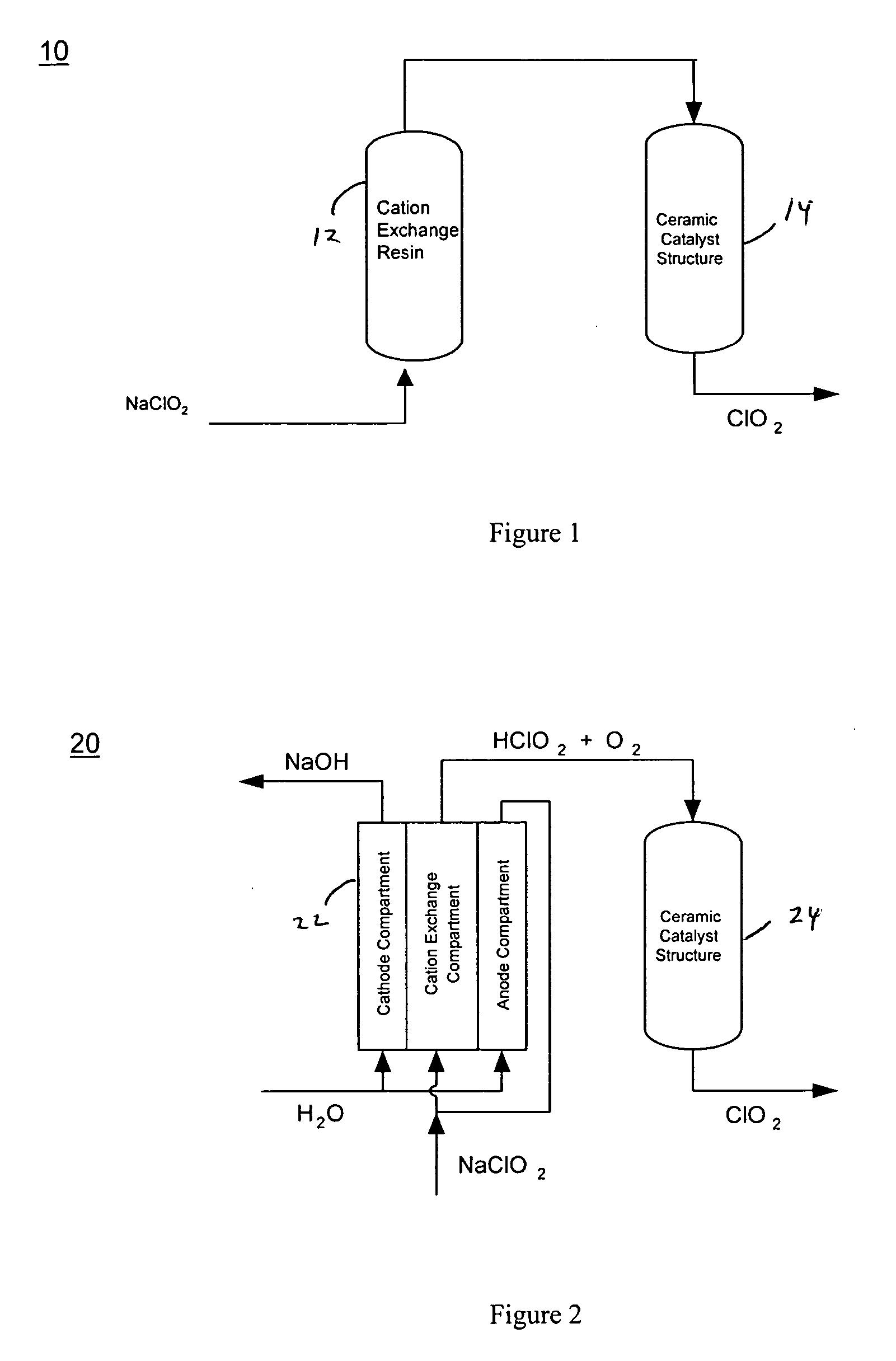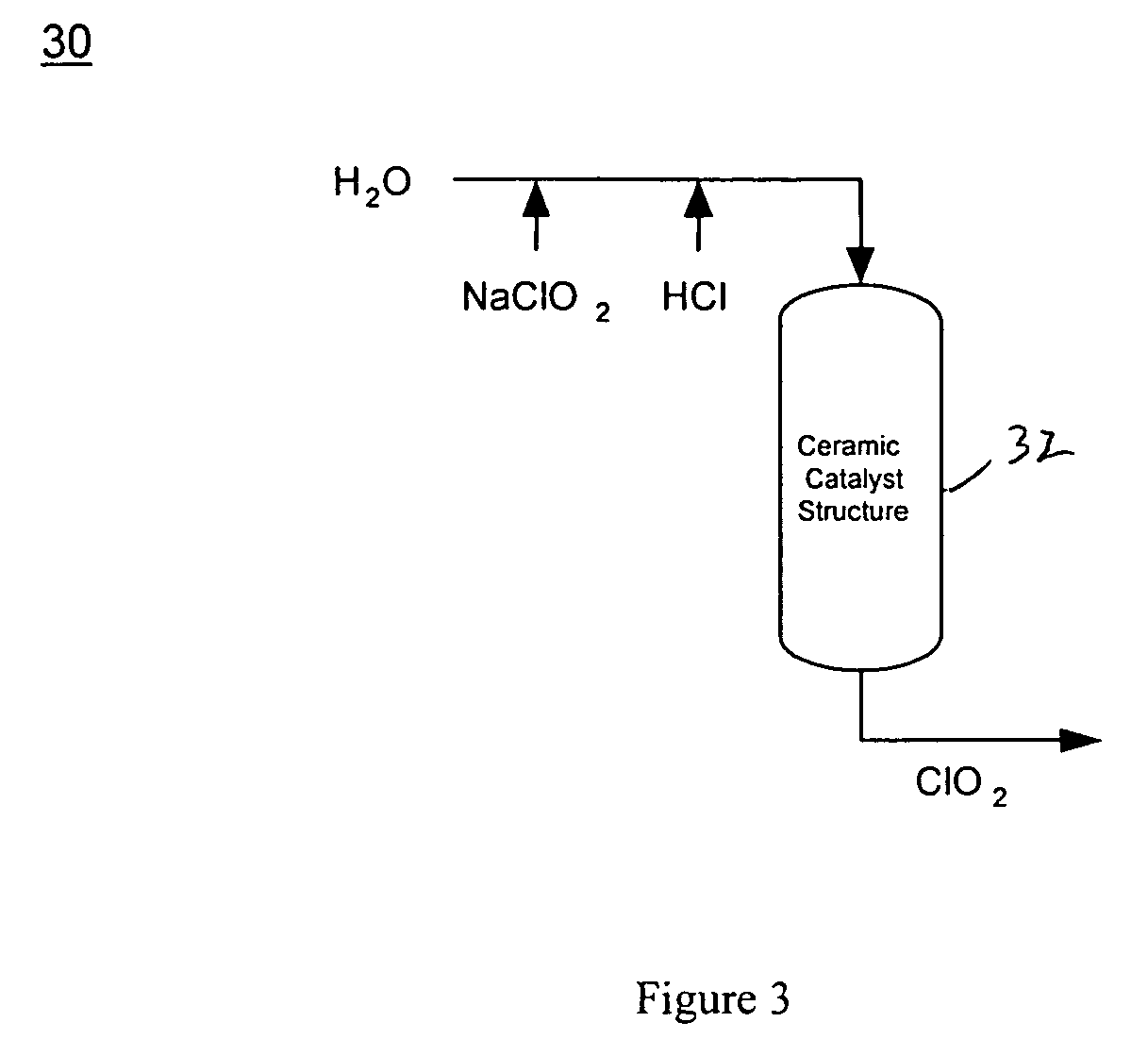Processes for producing an aqueous solution containing chlorine dioxide
a technology of chlorine dioxide and aqueous solution, which is applied in the direction of physical/chemical process catalysts, halogen oxides/oxyacids, metal/metal-oxides/metal-hydroxide catalysts, etc., can solve the problems of short shelf life, unstable chlorine dioxide solution, and inability to commercializ
- Summary
- Abstract
- Description
- Claims
- Application Information
AI Technical Summary
Benefits of technology
Problems solved by technology
Method used
Image
Examples
example 1
[0049] In this Example, four pieces of the catalyst material as described herein, measuring approximately 1.3″ in outside diameter and 4″ in length, were snuggly fit into a 24″ column, whose inner diameter was approximately 1.0″. The porosity of the ceramic structure was characterized as medium, which consisted of approximately 70% porosity. To place the platinum on the surface of the porous ceramic structure and form the catalyst material, an 87 mL precursor solution was made by dissolving 1.24 grams of tetraammineplatinum (II) chloride crystal into 2.6 mL of 30% ammonia hydroxide and 52.2 mL of 60% isopropyl alcohol at 35° C., such that the solution contained 0.69 grams of platinum. The porous ceramic structure was submerged in the precursor solution for three hours so as to wet the entire internal and external surfaces of the structure. The wetted structure was dried, placed in a ceramic crucible, and calcined under an oxygen-containing environment at 450° C. for 60 minutes. The ...
example 2
[0054] In this Example, four pieces of the catalyst material as in Example 1 measuring approximately 1.0″ in outside diameter and 4″ in length were snuggly fit into a 24″ column, whose inner diameter was approximately 1.0″. The porosity was characterized as medium, consisting of approximately 70% porosity.
[0055] As generally shown in FIG. 2, an electrochemical acidification cell was first used to convert the sodium chlorite to chlorous acid. The acidification cell composed of three chambers and two cation-permeable membranes. The central chamber contained a bed of highly crosslinked macro-porous cation exchange resin. One end chamber contained a cathode and the other an anode. Both end chambers were also filled with cation exchange resin. A transverse DC electric field was imposed by an external power supply via the electrodes.
[0056] The width and length of all three chambers were 5.08 cm and 25.4 cm, respectively. The thickness of the center chamber and both end chambers were 1.2...
PUM
| Property | Measurement | Unit |
|---|---|---|
| weight percent | aaaaa | aaaaa |
| molar ratio | aaaaa | aaaaa |
| particle size | aaaaa | aaaaa |
Abstract
Description
Claims
Application Information
 Login to View More
Login to View More - R&D
- Intellectual Property
- Life Sciences
- Materials
- Tech Scout
- Unparalleled Data Quality
- Higher Quality Content
- 60% Fewer Hallucinations
Browse by: Latest US Patents, China's latest patents, Technical Efficacy Thesaurus, Application Domain, Technology Topic, Popular Technical Reports.
© 2025 PatSnap. All rights reserved.Legal|Privacy policy|Modern Slavery Act Transparency Statement|Sitemap|About US| Contact US: help@patsnap.com



